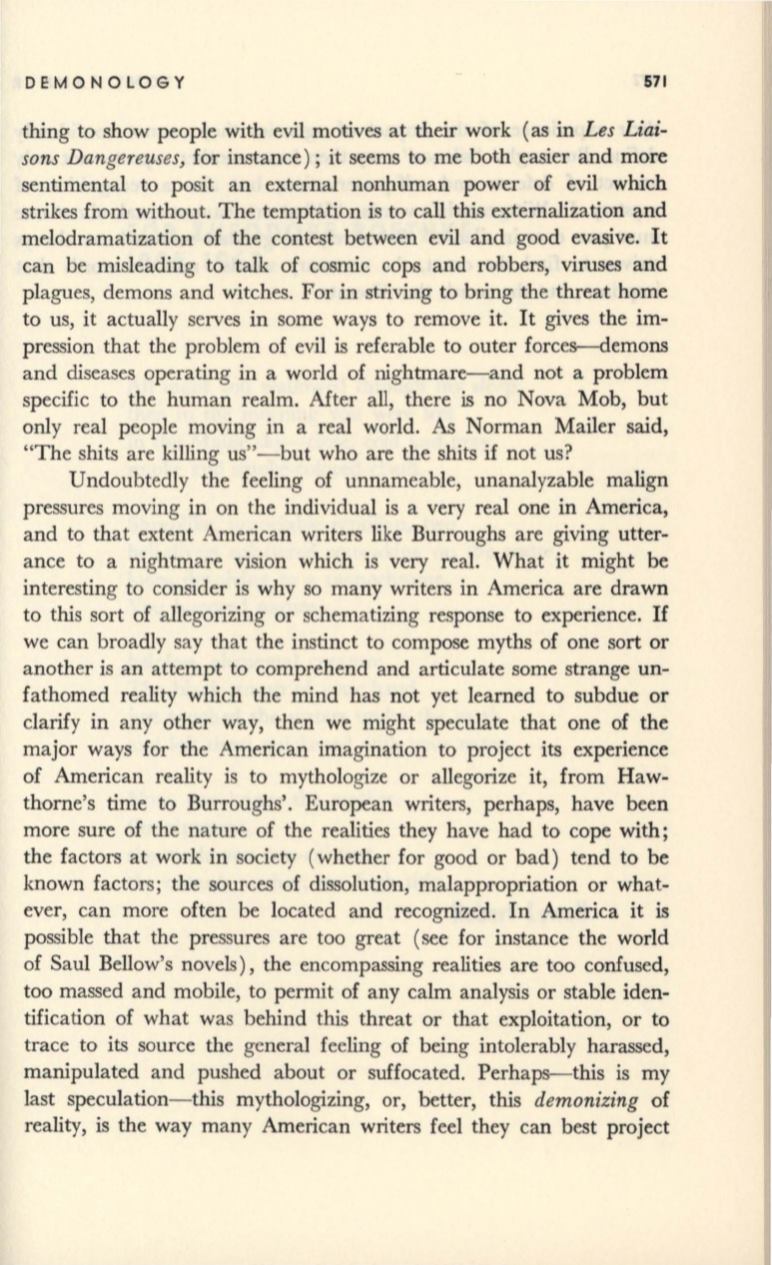
DEMONOLOGY
571
thing to show people with evil motives at their work (as in
Les Liai–
sons Dangereuses,
for instance) ; it seems to me both easier and more
sentimental to posit an external nonhuman power of evil which
strikes from without. The temptation is to call this externalization and
melodramatization of the contest between evil and good evasive.
It
can be misleading to talk of cosmic cops and robbers, viruses and
plagues, demons and witches. For in striving to bring the threat home
to us, it actually serves in some ways to remove it.
It
gives the im–
pression that the problem of evil is referable to outer forces-demons
and diseases operating in a world of nightmare-and not a problem
specific to the human realm. After all, there
is
no Nova Mob, but
only real people moving in a real world.
As
Norman Mailer said,
"The shits are killing us"-but who are the shits if not us?
Undoubtedly the feeling of unnameable, unanalyzable malign
pressures moving in on the individual is a very real one in America,
and to that extent American writers like Burroughs are giving utter–
ance to a nightmare vision which is very real. What it might be
interesting to consider is why so many writers in America are drawn
to this sort of allegorizing or schematizing response to experience.
If
we can broadly say that the instinct to compose myths of one sort or
another
is
an attempt to comprehend and articulate some strange un–
fathomed reality which the mind has not yet learned to subdue or
clarify in any other way, then we might speculate that one of the
major ways for the American imagination to project its experience
of American reality is to mythologize or allegorize it, from Haw–
thorne's time to Burroughs'. European writers, perhaps, have been
more sure of the nature of the realities they have had to cope with;
the factors at work in society (whether for good or bad) tend to be
known factors; the sources of dissolution, malappropriation or what–
ever, can more often be located and recognized. In America it is
possible that the pressures are too great (see for instance the world
of Saul Bellow's novels), the encompassing realities are too confused,
too massed and mobile, to permit of any calm analysis or stable iden–
tification of what was behind this threat or that exploitation, or to
trace to its source the general feeling of being intolerably harassed,
manipulated and pushed about or suffocated. Perhaps-this is my
last speculation-this mythologizing, or, better, this
demonizing
of
reality,
is
the way many American writers feel they can best project


